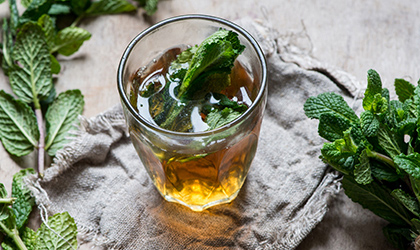
It may surprise you to learn that we aren’t alone in our bodies. We have a complex and diverse community of trillions of microorganisms – bacteria, viruses, fungi and other life forms, collectively known as the microbiome – cohabiting alongside us. These tiny microbes can be found dwelling in our oral cavity, respiratory tract and skin. Most of them, however, live in the ‘pocket’ of our large intestine – and the ‘gut microbiome’ is the term given to all the microorganisms living inside your gut.
What is the gut?
The gut is our nine-metre digestive tract that comprises three organs – the stomach, small intestine and large intestine. Essentially, it’s the tube that connects your stomach to your anus. It forms a part of a larger network called the gastrointestinal system.
A change in the gut health discourse
We have trillions and trillions of microbes dwelling inside our gut. Years ago, we viewed these gut bugs as ‘good’ or ‘bad’. Thankfully, however, we now understand this approach to be far too binary and oversimplified. The fascinating science that has taken place in recent years highlights the vital role these microbes play in our health – not just for our digestive system but also for all other systems in the body.
How do we acquire our gut microbiome?
As soon as a baby enters the world – via natural birth or a caesarean section – it’s immediately coated with trillions of bacteria, viruses, and fungi, which begin to grow on it and in it. These microbes lay the foundation for a huge microbial organ, most of which reside in the gut. For the most part, these bacteria come from a baby’s mother, especially if born vaginally, deriving from her gut, skin and breast milk.
Caesarean and the gut microbiome
Research suggests caesarean section babies tend to acquire a less diverse range of gut bacteria since they don’t receive an initial coating from the mother’s gut and birth canal (1). Interestingly, this has been linked to higher rates of allergies and chronic immune conditions (2). However, some experts suggest the live bacteria found in breast milk may improve a baby’s gut microbiome if they’ve been born via a caesarean section (3).
As a baby begins to grow, it picks up different microbes from its surrounding environment. Around the age of 3, a baby’s gut bacteria normalises.
References:
-
(CNIO), S., & (UKRI), U. (2021). C-section babies are missing key microbes. https://www.nature.com/articles/d41586-019-02807-x
-
Loo, E., Sim, J., Loy, S. L., Goh, A., Chan, Y. H., Tan, K. H., Yap, F., Gluckman, P. D., Godfrey, K. M., Van Bever, H., Lee, B. W., Chong, Y. S., Shek, L. P., Koh, M., & Ang, S. B. (2017). Associations between caesarean delivery and allergic outcomes: Results from the GUSTO study. Annals of allergy, asthma & immunology : official publication of the American College of Allergy, Asthma, & Immunology, 118(5), 636–638.
-
Guo, C., Zhou, Q., Li, M. et al. (2020) Breastfeeding restored the gut microbiota in caesarean section infants and lowered the infection risk in early life. BMC Pediatr 20, 532.
You Might Also Like

Keri
Keri Filtness has worked in the Nutrition Industry for 19 years. She is regularly called upon for her professional comments on health and nutrition related news. Her opinions have been featured by BBC3, Prima, Vitality, The Mirror, Woman’s Own and Cycling Weekly, amongst others. She has also worked one to one with journalists, analysing their diets and health concerns and recommending changes and additions, where appropriate.
View More



